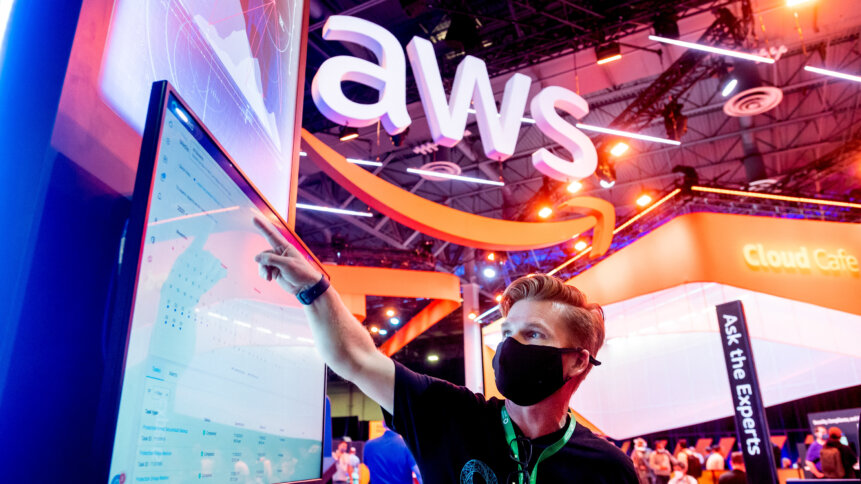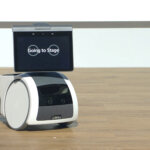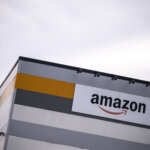
As tech companies make their predictions for 2022, Amazon Web Services (AWS) is banking on five areas that they believe will shape not only next year but beyond that as well. In the past two years, most predictions have been dampened by the pandemic. However, AWS’s predictions for 2022 seem to make the most sense for both consumers and enterprises.
One cannot deny AWS’s pioneering cloud technology more than 15 years ago. In fact, they have enabled cloud infrastructure to evolve to a place where all parts of the cloud reach practically anywhere on the planet, and even into space. For Dr. Werner Vogels, Vice President and CTO at AWS, the cloud has allowed what was once science fiction to become science fact.
“Models and techniques in the artificial intelligence (AI) and machine learning (ML) realm have gotten better and better—so much so that we see glimpses of new kinds of use cases emerging that we previously only imagined in movies and comics. We are entering a phase where data is abundant, access to it is almost instantaneous, and our ability to make sense of it in new and subtle ways is practically automatic. But this technology is not replacing humans; it is augmenting how we engage with the world. 2022 will be an exciting year for technology, with it pushing all of us, and our planet, forward in the process,” said Vogels.
As such, Vogels’s 2022 predictions involve five key areas. They are in AI, the cloud, smart spaces, sustainability, and connectivity.
AI-supported software development takes hold
“Software development is a creative process, but one that has many repetitive tasks. In 2022, ML will begin to play a major role in augmenting software developers’ workstreams, helping them create more secure and reliable code,” said Vogels.
Cloud adoption globally has risen, especially with the pandemic making it a necessity for businesses as well. Vogels pointed out that companies across the world are bringing new ideas to their customers at scale faster than ever. However, he also explained that even with this acceleration in product delivery, people still spend a disproportional amount of time in one area of technology, which is software development.
The foundations have been laid for the future of software development by Amazon. Tools like Amazon DevOps Guru, Amazon CodeGuru, GitHub Copilot, and GPT-3 are the first steps in what he sees as the future of development, where ML is used in code development and software operations workstreams to help developers become more effective. In the coming years, Vogels believe that there is going to be an explosion of capabilities in this area.
“ML will free developers from the mundane parts of their jobs, such as code reviews and bug fixes—the undifferentiated heavy lifting of their world—and allow them to focus more on creating. The same technology will help us write sophisticated systems faster than ever and in ways that open the door to a new class of developers. We will see generative AI techniques increasingly create movies, music, and literature. Just as importantly, in a similar way, this technology will also start to play a role in detecting fake content, scams, and fraud. 2022 is the year where AI/ML takes on the heavy lifting in the lives of developers,” he said.
The everywhere cloud has an edge
“We’ve already seen the cloud go practically everywhere. The shift we’ll witness in 2022 is the cloud becoming highly specialized at the edges of the network. To fully realize the benefits of the cloud in workshops and warehouses, in restaurants and retail stores, or out in remote locations, there must be tailored solutions at the edge. The parallels to Amazon Scout in the cloud are devices like Amazon Monitron and AWS Panorama, purpose-built devices that bring cloud capabilities to the edges of the network to do a specific job,” said Vogels.
His predictions for 2022 and beyond are the cloud will accelerate beyond the traditional centralized infrastructure model and into unexpected environments where specialized technology is needed. Put simply, the cloud will be in cars, tea kettles, and TV. The cloud will be in everything from trucks driving down the road, to the ships and planes that transport goods. The cloud will be globally distributed and connected to almost any digital device or system on Earth, and even in space.
The rise of smart spaces, especially in senior care
“In 2022, our homes and buildings will become better assistants and more attentive companions to truly help with our most human needs. The greatest impact in the next few years will be with the elderly,” highlighted Vogels.
As such, over the next several years, smart spaces will come to life in a number of settings, but none with a higher impact than eldercare. For Vogels, it will be a combination of simple tasks like dimming lights and locking doors to the more contextual and proactive things that technology can do like asking questions when normal living patterns diverge and enacting common-sense solutions when necessary. It will result in taking better care of people, and in the case of an aging population, it means that we will create a new class of homes so people can actually stay at home.
Sustainability gets its own architecture
Sustainability efforts made headlines at COP26 this year. Vogels’ 2022 predictions is that developers will begin to make sustainability-conscious decisions about the systems and applications they are building. They will seek new approaches to cloud architectures that optimize for the needs of the planet as well as the needs of end-users.
“As developers, we are trained to think about how to optimize our architectures for factors like security, performance, reliability, and cost. In 2022, you can add sustainability to that list. What we will begin to see in the coming years is developers taking an active role in building sustainability-conscious architectures that take into account, not just the problems they are solving, but the planet as well,” he commented.
Vogels mentioned that developers will take an active role in reducing the carbon footprints of their applications. This will happen in a variety of areas, like taking into account where in the world they choose to run their applications to take advantage of green energy in the grid, considering the time needed to process a task or even specifying the chipset they use.
A new wave of connectivity will bring about a new class of applications
With Low Earth orbit (LEO) satellites set to bring affordable broadband to every corner of the planet, it will change the lives of billions of people as teachers, students, small businesses, and virtually anyone gets online.
Among the new LEO satellites will be about 1,500 from Amazon’s Project Kuiper, a network of satellites to deliver fast, affordable broadband to unserved and underserved communities around the world. What Vogels sees coming along with this planet-scale broadband is a whole new class of applications that will benefit from it.
“With ubiquitous connectivity, we start to unlock use cases that simply aren’t possible today. Large enterprises with remote assets—such as solar installations, heavy equipment, or far-flung buildings—will be able to better optimize the use and maintenance of those assets. Transportation companies with vehicles, planes, and vessels on the move will have access to continuous data streams uploaded to the cloud, and regular updates downloaded to vehicles and vessels on the ground, in the air, and on the water. Ubiquitous connectivity will take us from intelligent spaces to intelligent cities, intelligent countries, and finally, toward an intelligent world,” he concluded.










